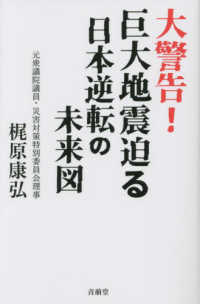Full Description
Many fans loved Fifty Shades of Grey. Many others loved to hate it. E.L. James' trilogy of novels, and the film based on them, created a popular culture sensation, revealing much about a society that is both preoccupied with and scandalized by BDSM eroticism. Some critics argued that the franchise glorified kinky sex and normalized sexual abuse. Others praised it for illuminating consensual sexual practices that have long been marginalized in mainstream media. Yet behind their erotic content, James' novels explored not only everyday failures to identify questionable behaviors in romantic relationships, but also society's obsession with wealth. They also speak to the value and meaning of fan fiction, parodies, merchandizing and product placement.
Contents
Table of Contents
Acknowledgments
Introduction
One. From Twilight to Master of the Universe to Fifty Shades: Fan Fiction, Ownership and Agency
Two. Is Fifty Shades Romance or Porn? Defining a Popular Cultural Text
Three. My Mom Is Reading It? Visibility, Technology and Presentist Assumptions
Four. Ambivalent about Sex: Faith, First Amendment and Censorship
Five. Not for Anastasia's Pleasure: The Trilogy's Failure to Liberate Sexualities
Six. Masking the Real Problems: Moral Panic and Fifty Shades-Inspired Crimes
Seven. Extending the World of the Novel: Fan Fiction, Book Clubs, Parodies and Beyond
Eight. "Slap Me Like You Do": The Movie Soundtrack and Score
Nine. Connected in the World of Fifty Shades: Film Adaptation, Merchandizing, Spinoffs and Beyond
Ten. Christian Grey as an Aspirational Brand: Signs of Wealth and Materialism
Eleven. The International Reception: Japan
Bibliography
Index




![Das der war leyb Christi vnd seyn heiliges blut, im Sacrame[n]t gegenwertig sey : richtige erkleru[n]g auff das new büchleyn. D. Johannes Haußscheyn, disem zuwider außgangen (2010. 84 S. 220 mm)](../images/goods/ar/work/imgdatak/38397/3839704367.jpg)



